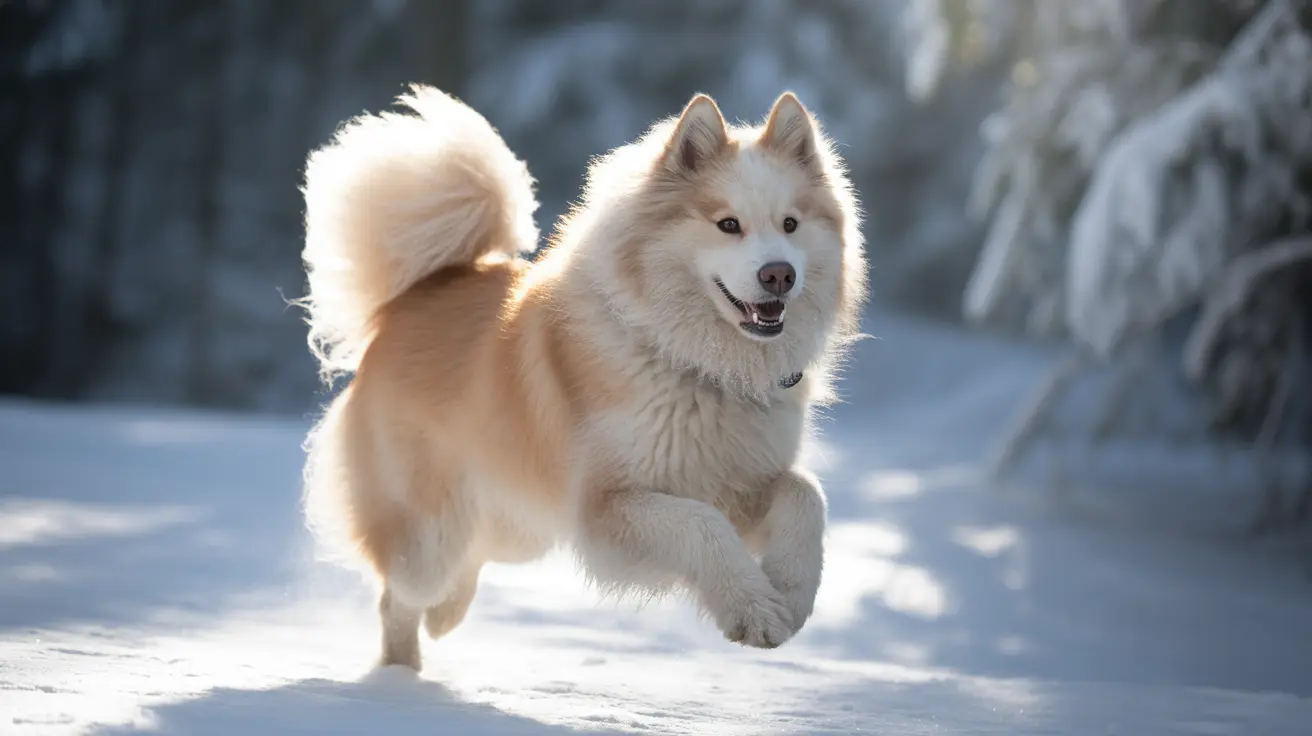Introduction
The Samoyed mix represents an exciting blend of the ancient Samoyed's distinctive traits with other beloved dog breeds. These mixed breeds combine the Samoyed's legendary friendly disposition, striking appearance, and impressive intelligence with diverse characteristics from their other parent breeds. Whether you're considering a Samusky's boundless energy or a Pomsky's compact charm, understanding these unique hybrids is essential for potential owners.
In this comprehensive guide, we'll explore the most popular Samoyed mixes, their characteristics, and what you need to know about caring for these remarkable dogs. From temperament to grooming requirements, we'll help you determine if a Samoyed mix is the right choice for your family.
Popular Samoyed Mixed Breeds
The Samusky (Samoyed Husky Mix)
The Samusky combines two Arctic working breeds, resulting in a high-energy, intelligent companion. These dogs typically inherit the striking appearance of both parents, featuring a thick double coat and often ice-blue or brown eyes. They require extensive exercise and mental stimulation, making them ideal for active families who enjoy outdoor activities.
The Samapoo (Samoyed Poodle Mix)
Perfect for allergy-sensitive families, the Samapoo often inherits the Poodle's low-shedding coat while maintaining the Samoyed's friendly disposition. These medium-sized dogs typically weigh between 40-55 pounds and showcase remarkable intelligence from both parent breeds.
Temperament and Personality Traits
Most Samoyed mixes inherit their Samoyed parent's sociable nature and love for human companionship. They typically display:
- Friendly and outgoing personalities
- Strong family bonds
- High intelligence with a potential stubborn streak
- Excellent compatibility with children
- Need for regular social interaction
Exercise and Training Requirements
Samoyed mixed breeds generally require significant physical activity and mental stimulation. Plan for:
- 60-90 minutes of daily exercise
- Regular training sessions to prevent boredom
- Structured activities like agility or obedience training
- Secure, fenced areas for off-leash play
Grooming and Care
The signature thick double coat of Samoyed mixes demands regular maintenance. Essential grooming tasks include:
- Daily brushing during shedding seasons
- Weekly thorough grooming sessions
- Regular nail trimming and dental care
- Professional grooming every 8-12 weeks
Health Considerations
While mixed breeds often benefit from hybrid vigor, owners should watch for common health issues including:
- Hip dysplasia
- Eye problems
- Heart conditions
- Skin sensitivities
- Temperature regulation challenges
Frequently Asked Questions
What are the common physical traits and temperaments I can expect from popular Samoyed mixed breeds like the Samusky or Samapoo?
Samoyed mixes typically inherit a thick double coat, medium to large size, and friendly temperaments. Samusky tends to be more energetic and vocal, while Samapoo often displays a calmer demeanor with potentially lower shedding.
How should I groom and care for a Samoyed mix's thick double coat to prevent matting and manage shedding?
Regular daily brushing, especially during shedding seasons, is essential. Use an undercoat rake followed by a slicker brush, and maintain a consistent grooming schedule. Professional grooming every few months can help manage the coat effectively.
Are Samoyed mixes suitable for apartment living, or do they require a lot of exercise and space?
While some smaller Samoyed mixes can adapt to apartment living, most require significant exercise and space. They need at least 60-90 minutes of daily activity and access to outdoor areas for proper physical and mental stimulation.
What health issues should I be aware of when owning a Samoyed mixed breed, and how can I best support their well-being?
Monitor for hip dysplasia, eye problems, and heart conditions. Regular veterinary check-ups, appropriate exercise, proper nutrition, and maintaining a healthy weight are crucial for their well-being.
How can I address separation anxiety and vocalization tendencies common in energetic Samoyed mixes such as the Samoyed Husky mix?
Address these issues through early socialization, consistent training, and providing plenty of exercise and mental stimulation. Consider crate training, puzzle toys, and gradually increasing alone time to help manage separation anxiety.
Conclusion
Samoyed mixes offer unique combinations of beloved dog breeds, creating companions that can suit various lifestyles and preferences. While they require dedicated care and attention, their loving nature and distinctive characteristics make them wonderful family pets for committed owners ready to meet their needs.






